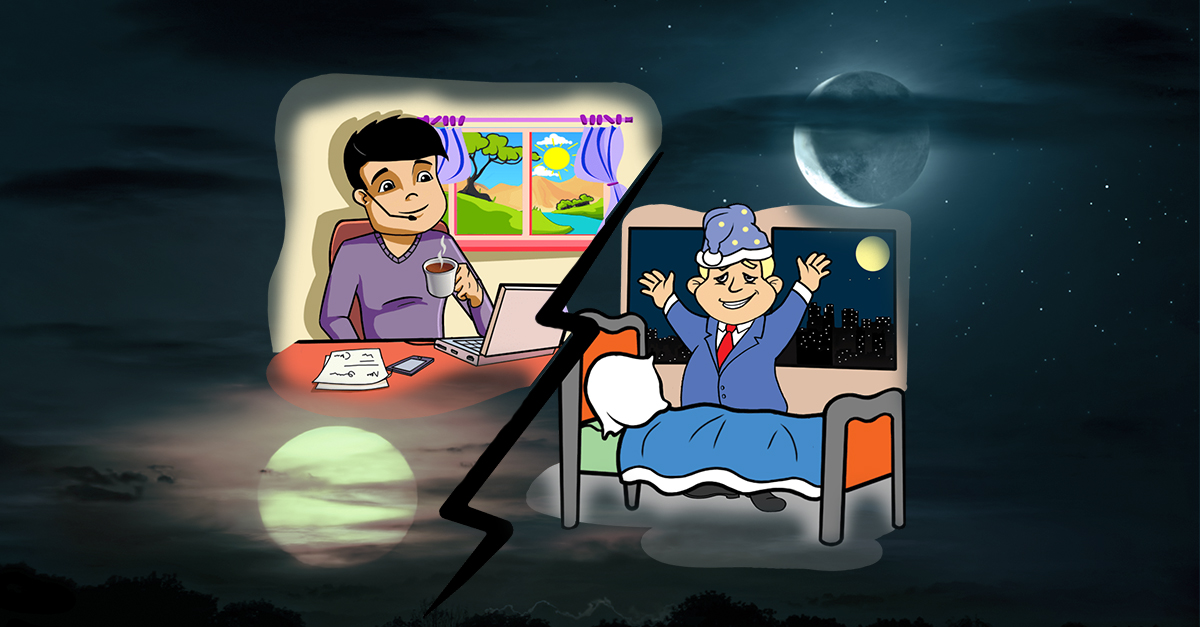
The incident described below happened at the very beginning of my career as a project manager, and it taught me a lot.
It’s the end of a normal working day and time to leave the office, but I’m struggling to wrap up one of my projects. I am still actively corresponding with a client in Japan. I remember her name was Akiko.
Initially the deadline was set for the middle of the day, but I’d had to ask Akiko to push it back a couple times because there was always something or other that wasn’t quite right. We both want to go home, we don’t want to hold each other up and we’re trying to tie up all the loose ends as quickly as possible.
My wife calls:
“When are you coming home? It’s already eight o’clock. Should I wait up for you for dinner?”
“Yes, don’t worry, I’ll be there soon!”
I send Akiko the latest version of this unrelenting file. She responds instantly, “Thanks, well received, I’ll check it now and get back to you.” I hope this is going be the final version and wait for confirmation. I get a brief respite. The office is silent except for the sound of my computer. My colleagues have all left already, I’m alone.
And the thought suddenly comes to me: Wait, if it’s 8:15pm here, what time is it for Akiko? She’s in Japan, they’re six hours ahead of us! Three in the morning! It can’t be. She’s probably in Europe somewhere, or in the US—they’re behind us.
The confirmation comes in from Akiko: “The file is all good, thanks, you can consider the project closed, it was a pleasure working with you.” I thank her in return and ask her where she’s based anyway. Her reply comes straight back and it just kills me:
“I’m in Tokyo. And you can’t even imagine how exhausted I am...”
Anyone who’s ever worked with Japanese clients will know that receiving a message like that is almost unheard of. They are patient, hard-working people who never complain. I can only guess what state she must have been in for her to add that extra note.
Slightly perplexed, I quickly dashed off an email: “Oh my God, Akiko, I was sure you were still within working hours! You should have said something earlier, I would have sped up the project or we could have pushed it back to tomorrow. Go home, you need to get some rest!”
And her reply comes back: “I can’t—I live an hour and a half outside Tokyo by train and I have to get to work for 6am tomorrow, so there’s no point in going home, I’ll just have to spend the night at the office.”
...I went home slightly depressed. My wife even asked me if I was feeling okay. Despite the fact that Akiko had agreed to those deadline changes, I couldn’t shift the feeling that I had really let her down.
Lessons
- If you work with international clients, you always need to know what time zone your client is operating in and never force them to stay late at work.
- If your counterpart in Japan or China ends up having to stay late because of you, they probably won’t say anything—you won’t even realize you’re putting them out.
- When you come into the office in the morning, the first thing you need to do is prioritize your emails and requests according to who is physically to the east of you. In my case, first and foremost this means clients based in Japan, China and Korea. 9am for me means 3pm in Japan, meaning I need to answer any questions from Japan by 12pm at the latest—even earlier if possible.
- The main lesson—and this should always be at the forefront of your mind— is that you have to submit projects BEFORE the deadline. The deadline is not the time AT WHICH you have to submit the project; it’s the time BEFORE WHICH you have to submit the project.
Neither Akiko nor any of my other clients in eastern time zones have been held up at work after the end of THEIR working day since—at least not because of me.

.png)

.png)

